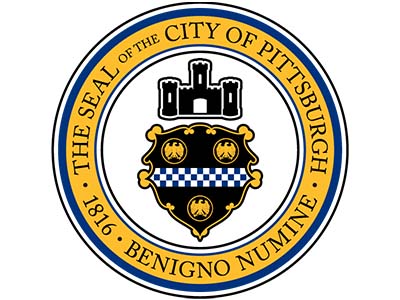Southwestern PA Native Plants with a Spotlight on Caterpillars

Enjoy beautiful illustrations of flora native to Pittsburgh and southwestern Pennsylvania!
In our Welcome Center Gallery through Sun., Jan. 8, plant lovers of all ages can enjoy stunning illustrations of plants native to the southwestern Pennsylvania region. Southwestern PA Native Plants with a Spotlight on Caterpillars is part of the Flora Project, a collaboration between Phipps Conservatory and Botanical Gardens' Botanical Art and Illustration Program, and the Allegheny Highlands Botanical Art Society.
Native plants play an important role in our ecosystem, having evolved complex and specific relationships with insects that, in turn, play an essential role in our local food chain. Caterpillars, in particular, are a primary food source for baby birds. According to renowned native plant author and entomology Professor Doug Tallamy, “ninety-six percent of our terrestrial birds are rearing their young on insects and most of those insects are caterpillars.” This year’s Flora participants portrays native plants and pollinators with a spotlight on caterpillars using a variety of mixed media and different substrates. Some artists explored graphite, watercolor, colored pencil and mixed media on a variety of different papers while others painted with egg tempera on board or colored pencil on drafting film.
For more information regarding the Phipps Botanical Illustration Programor other adult classes, please call 412-437-8308 or visit phipps.conservatory.org.
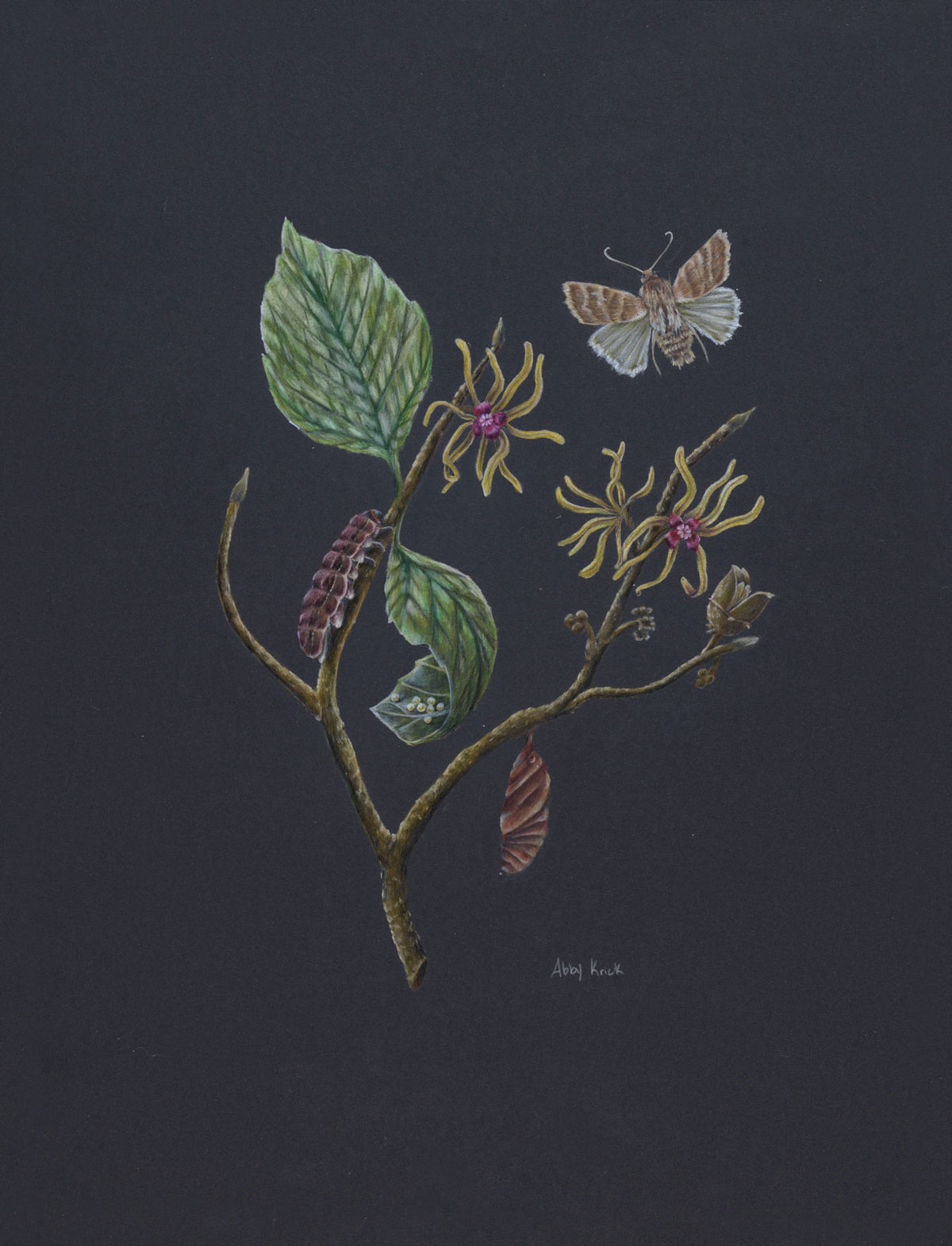
Witch-hazel (Hamamelis virginia), illustration by Abby Krick
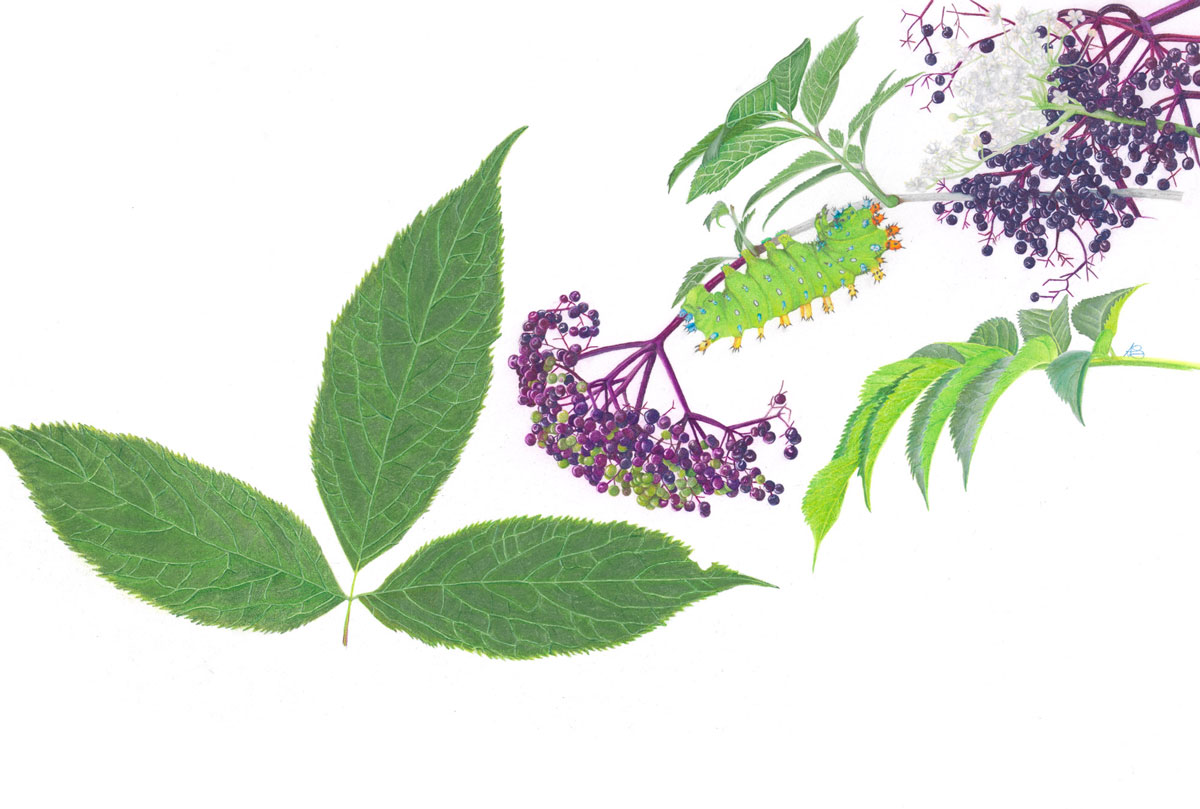
Elderberry (Sambucus canadensis), illlustration by Autumn Secrest
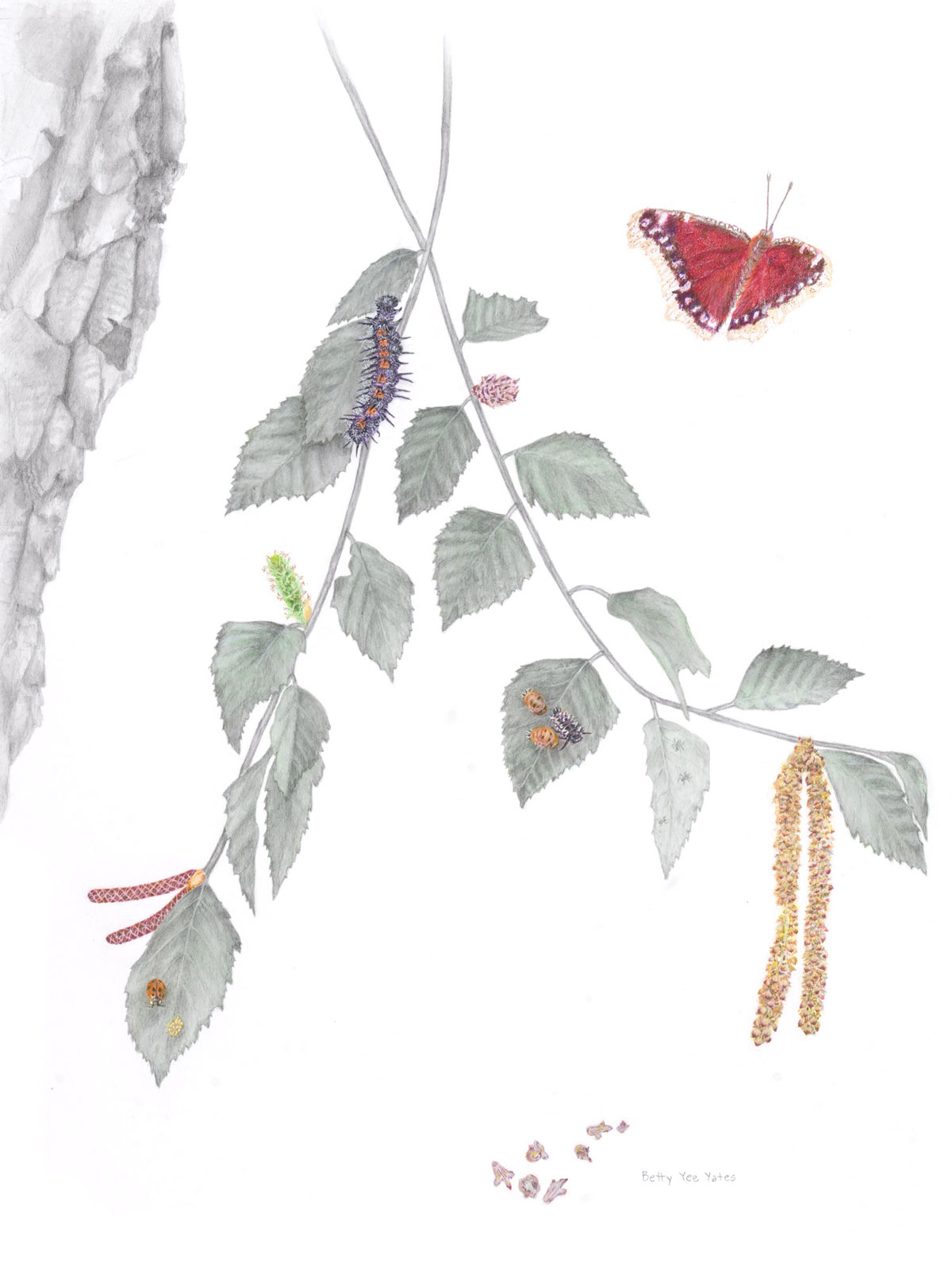
River birch (Betula nigra), illustration by Betty Yee-Yates
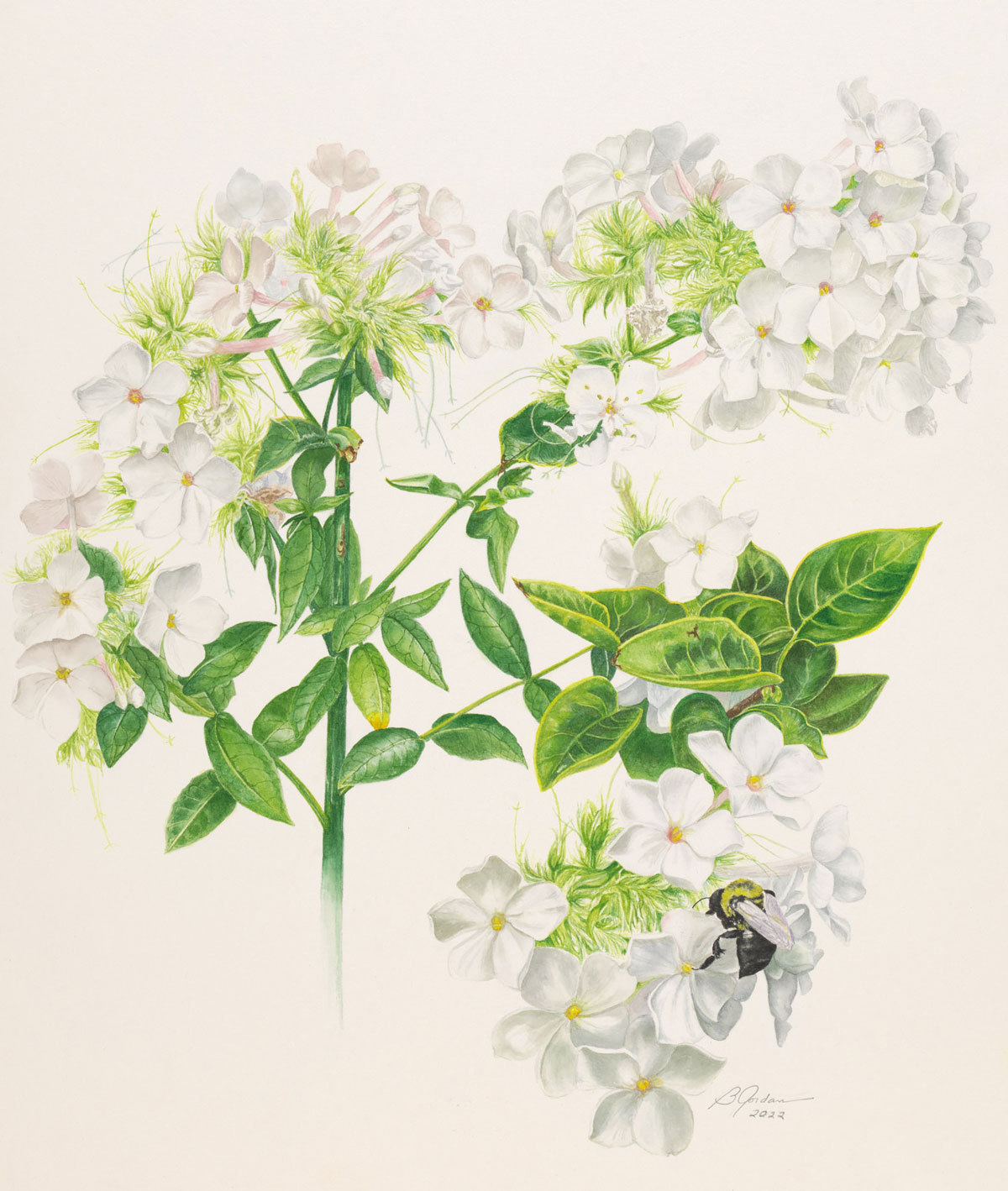
Garden phlox (Phlox paniculata), illustration by Brenda Jordan
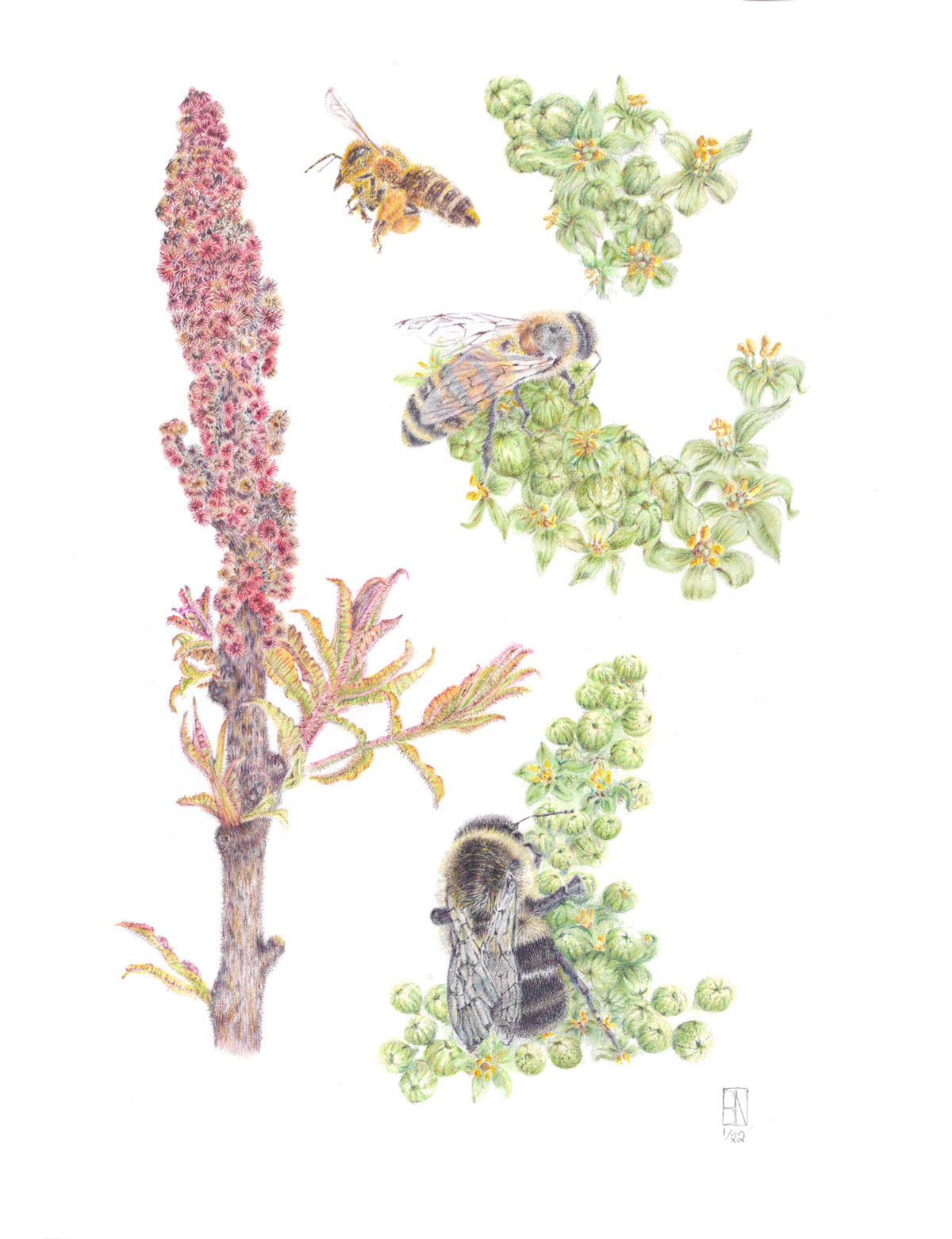
Staghorn sumac (Rhus typhina), illustration by Brenda Nemeth
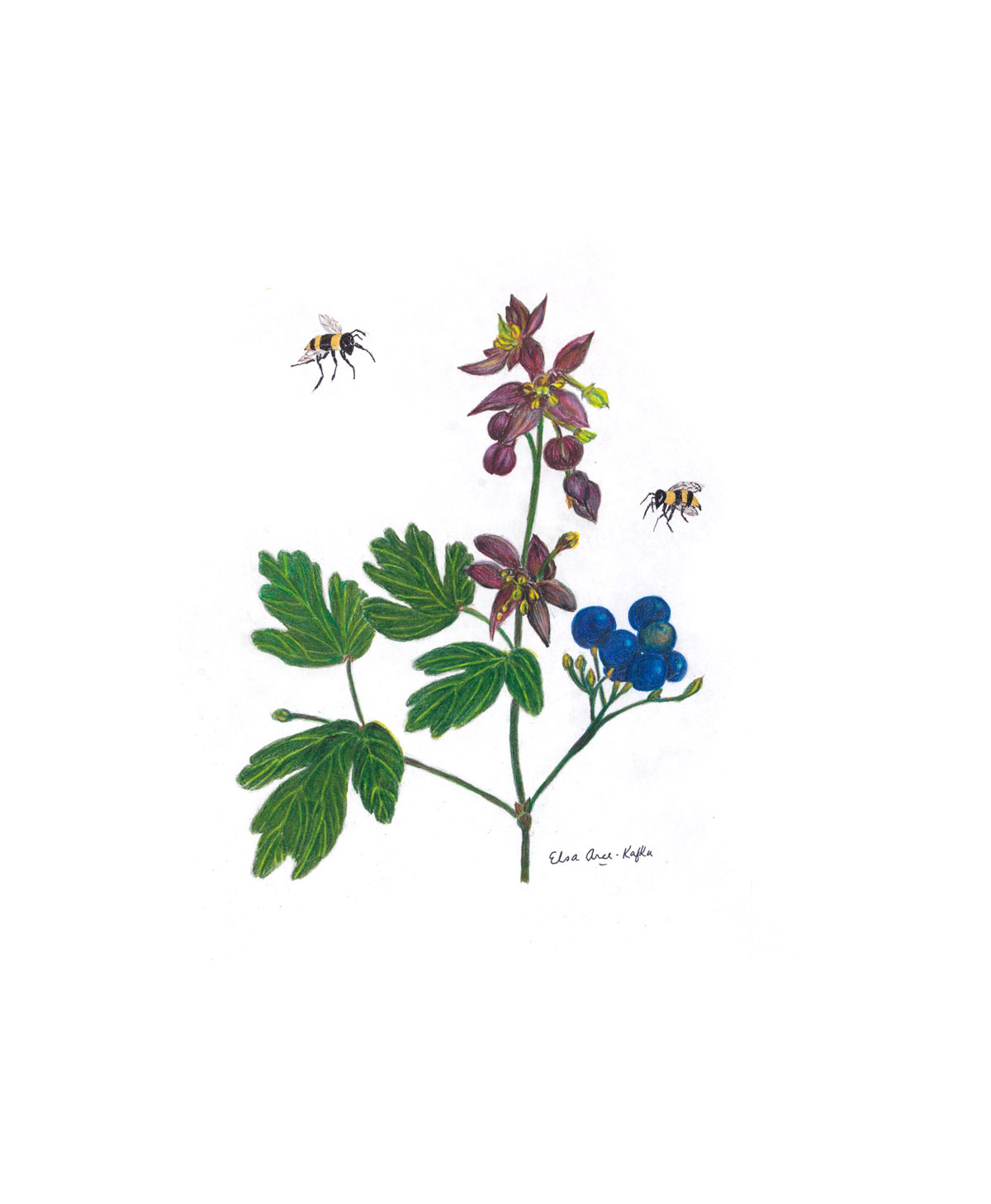
Blue cohosh (Caulophyllum thalictroides), illustration by Else Arce
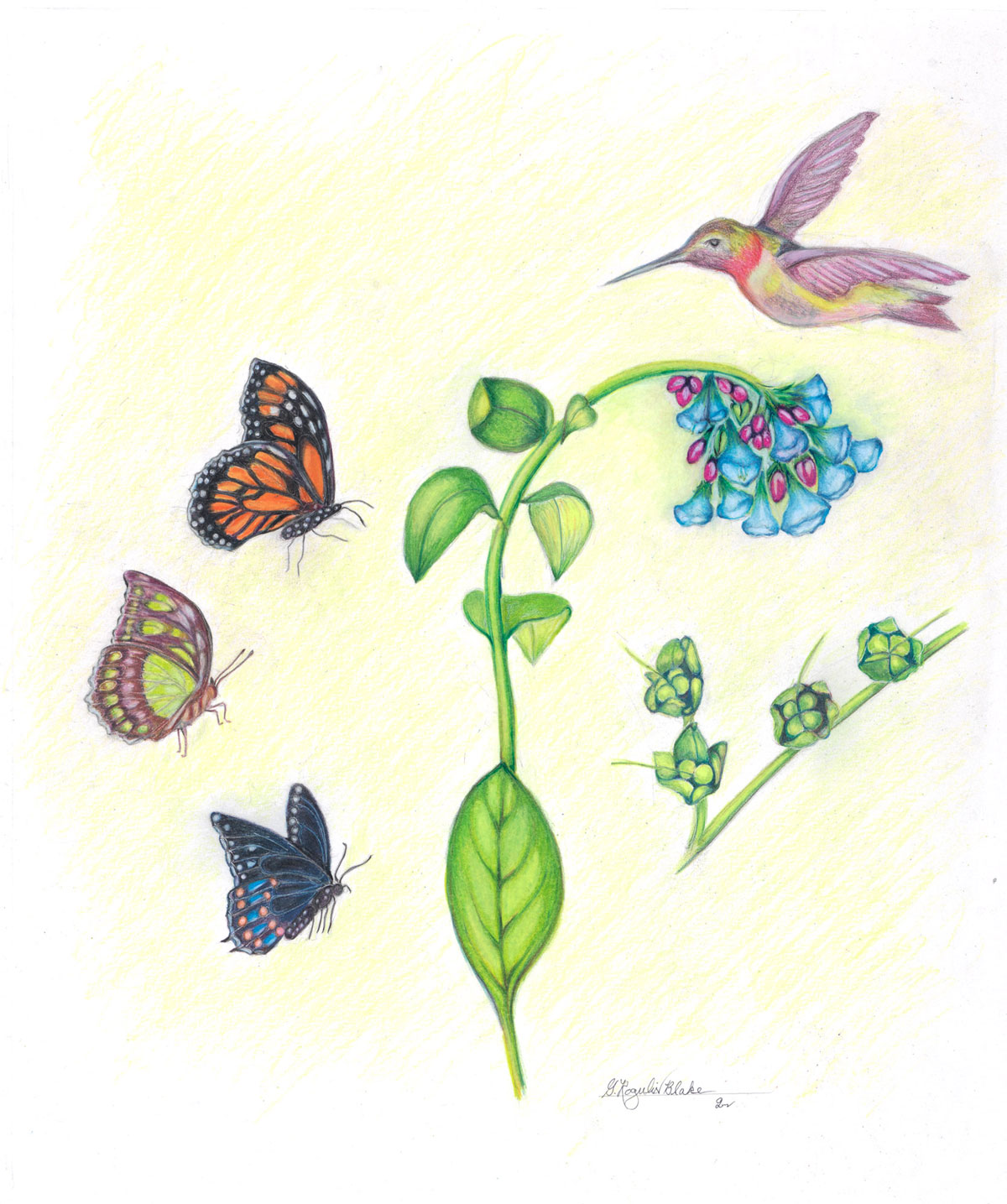
Virginia bluebells (Mertensia virginia), illustration by Gloria Blake
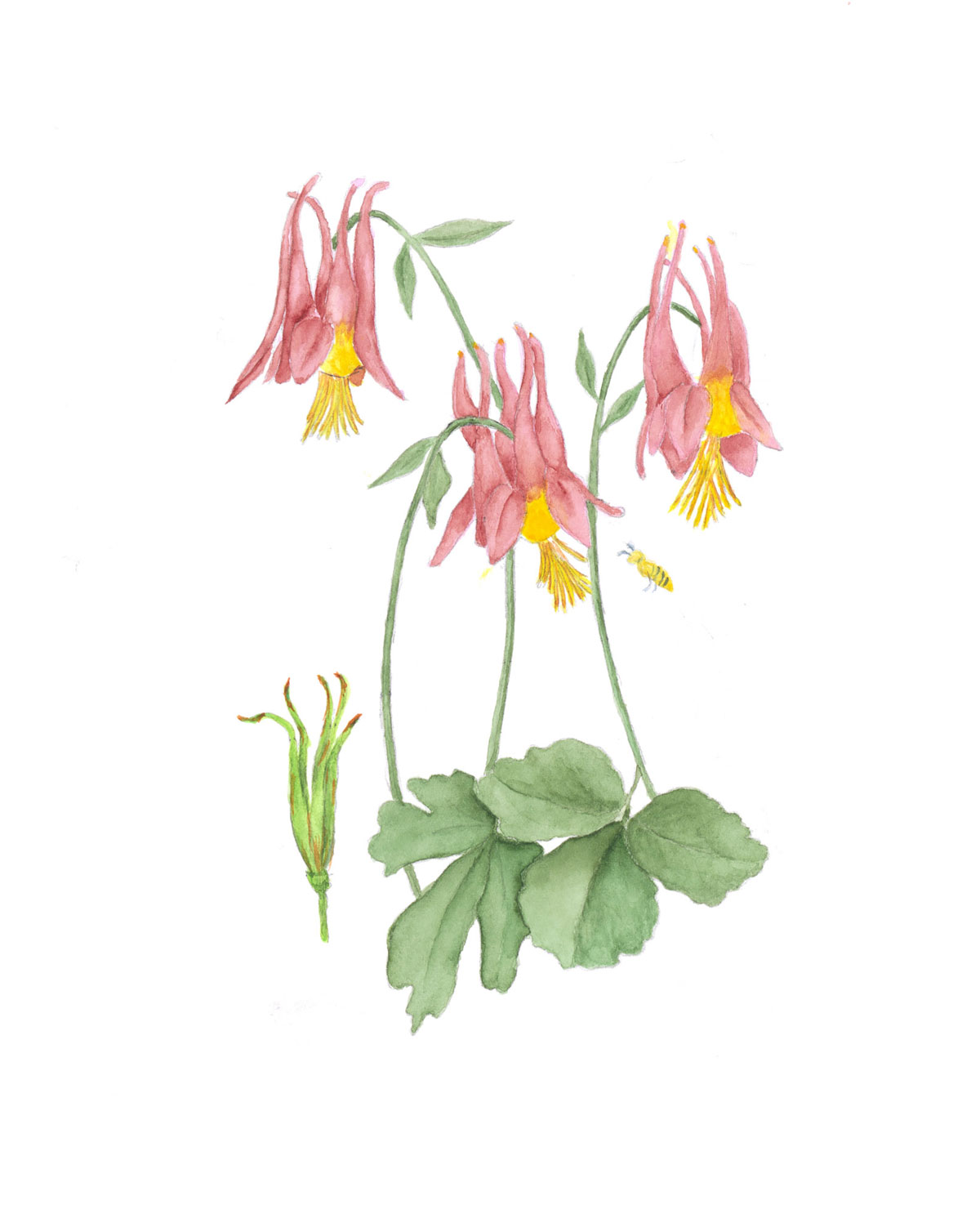
Wild columbine (Aquilegia canadensis), illustration by Helen Coltellaro
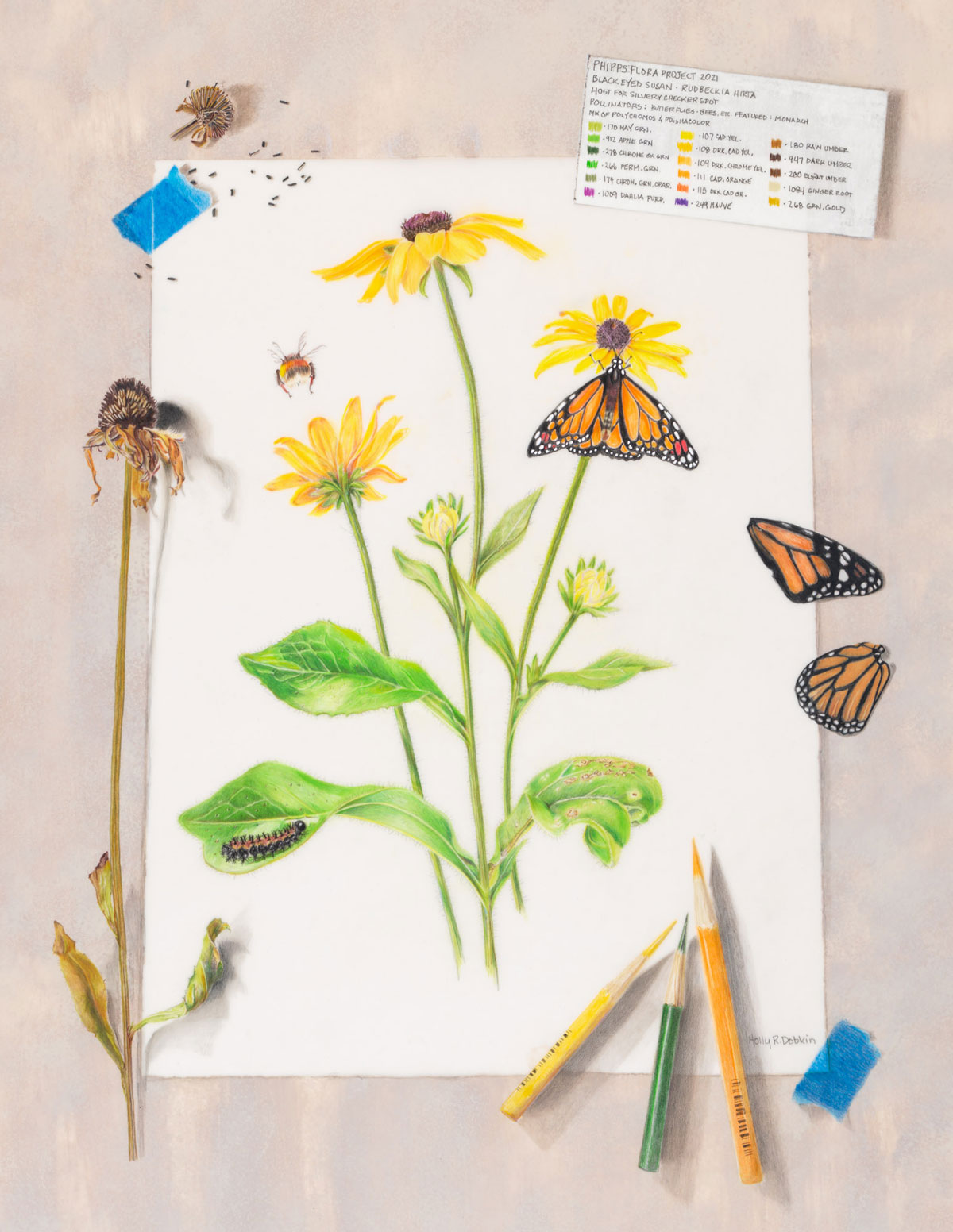
Black-eye Susan (Rudbeckia hirta), illustration by Holly Dobkin
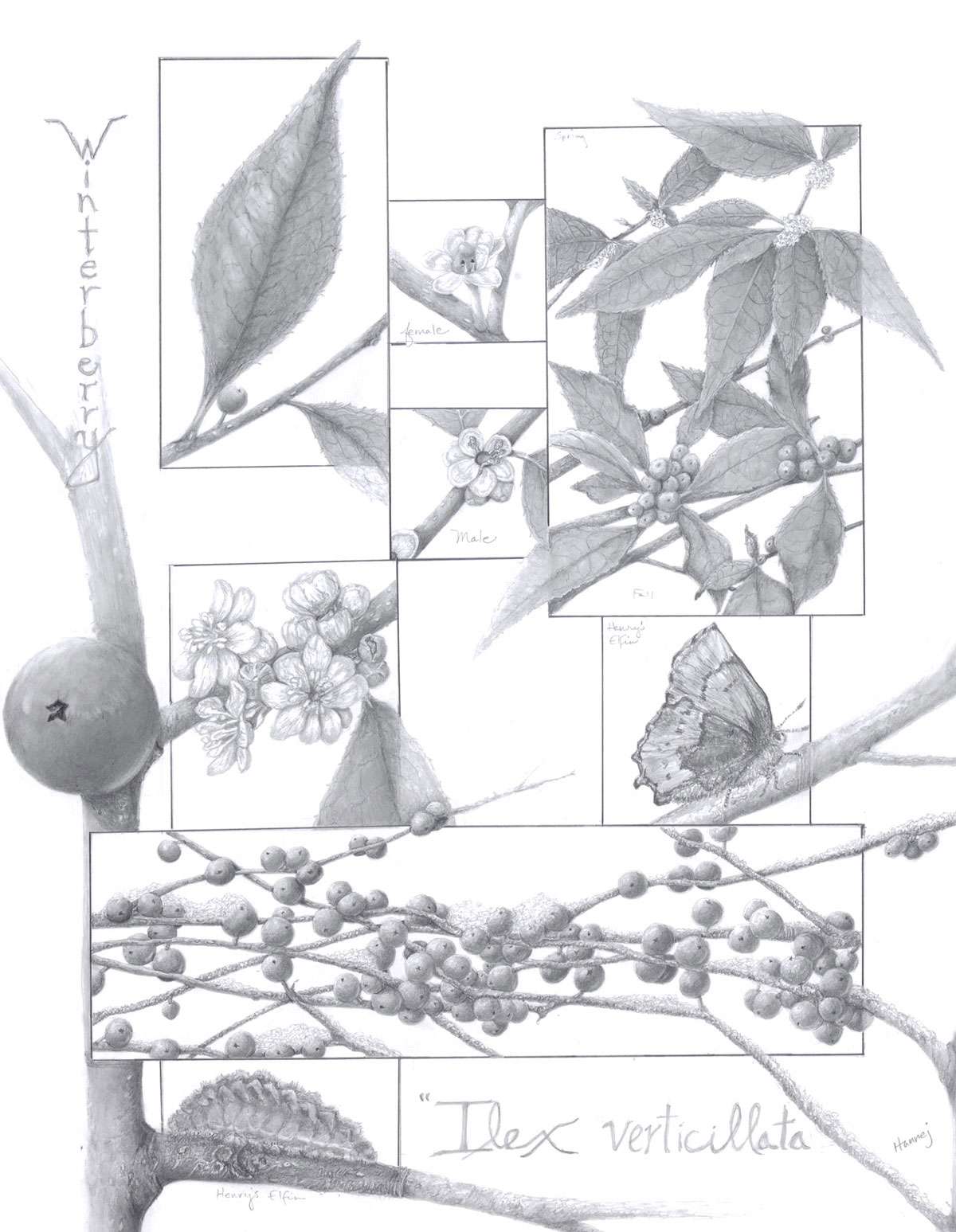
Winterberry (Ilex verticillata), illustration by Holly Johnson
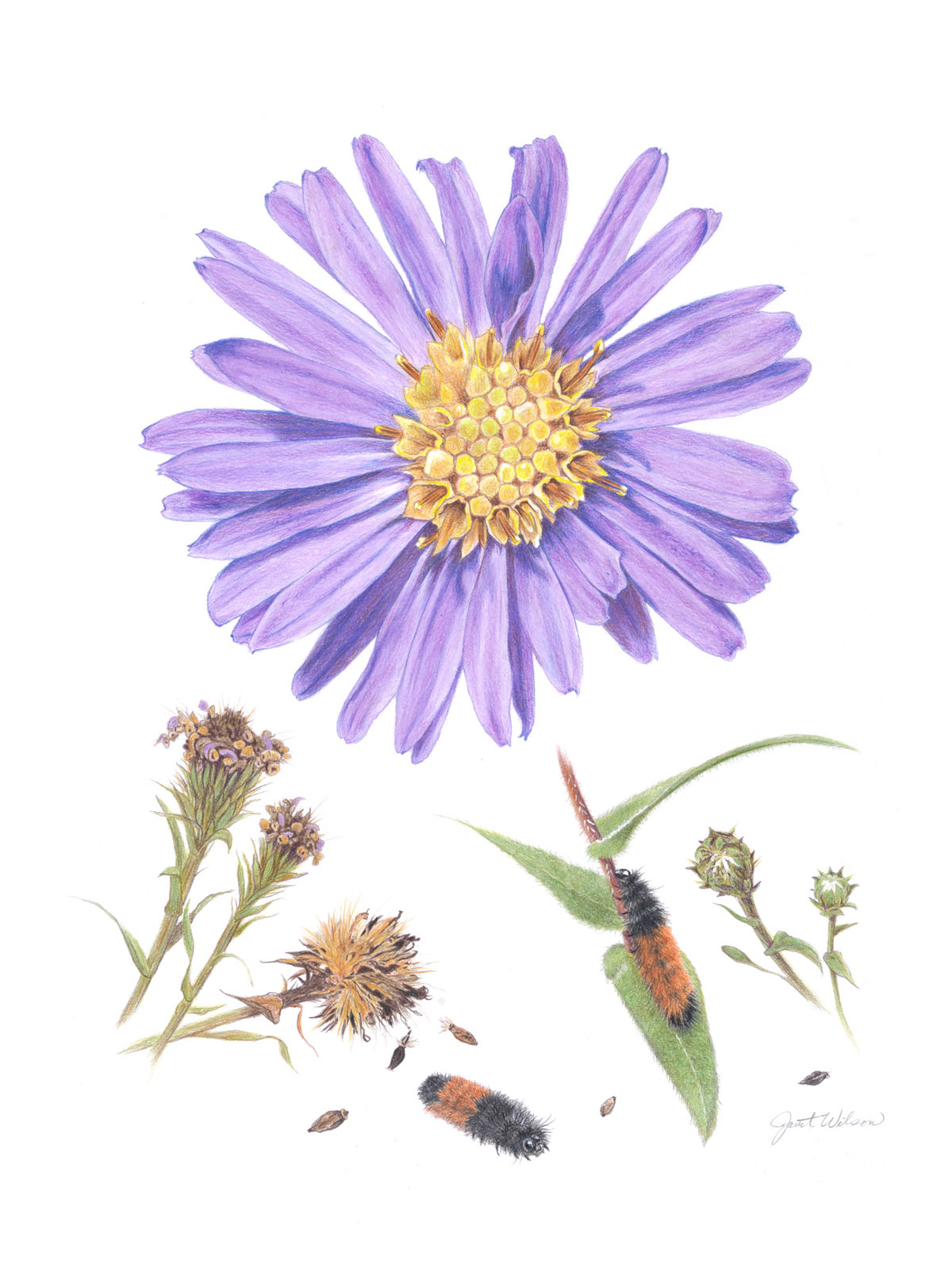
New England aster (Symphyotrichum novae-angliae (Aster)), illustration by Jan Wilson
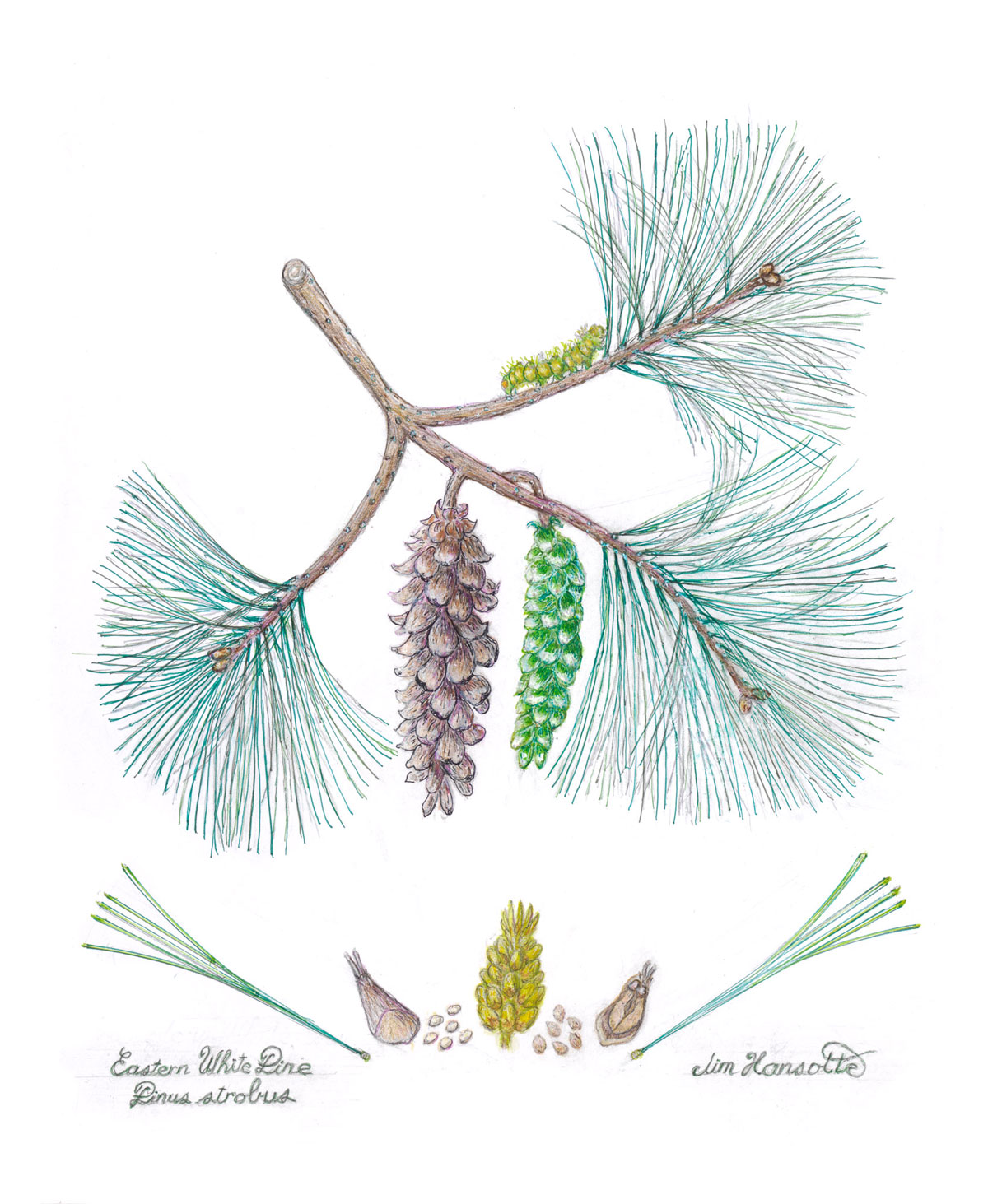
Eastern white pine (Pinus strobus), illustration by Jim Hansotte
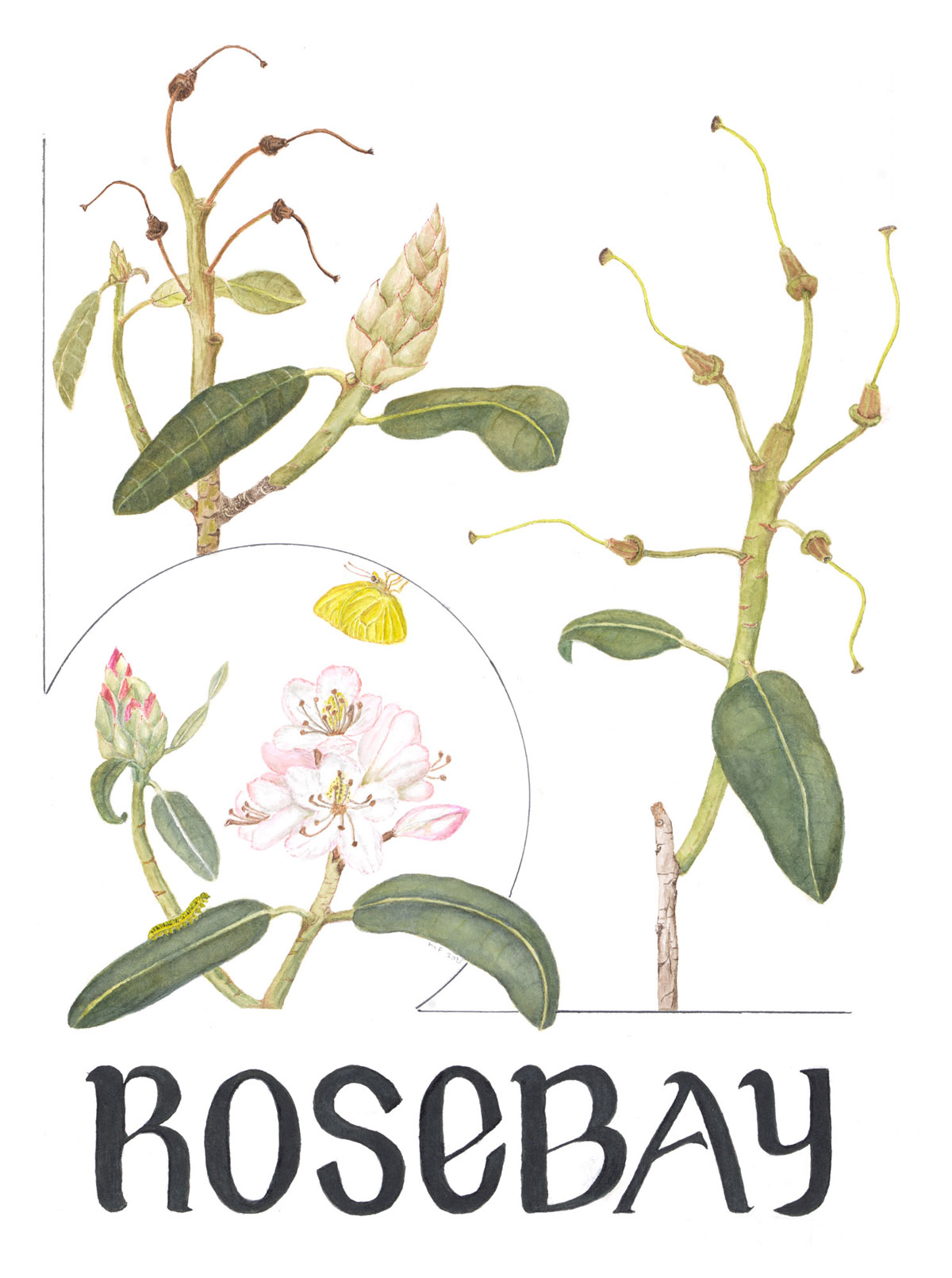
Rosebay (Rhododendron maximum), illustration by Linda Hykes
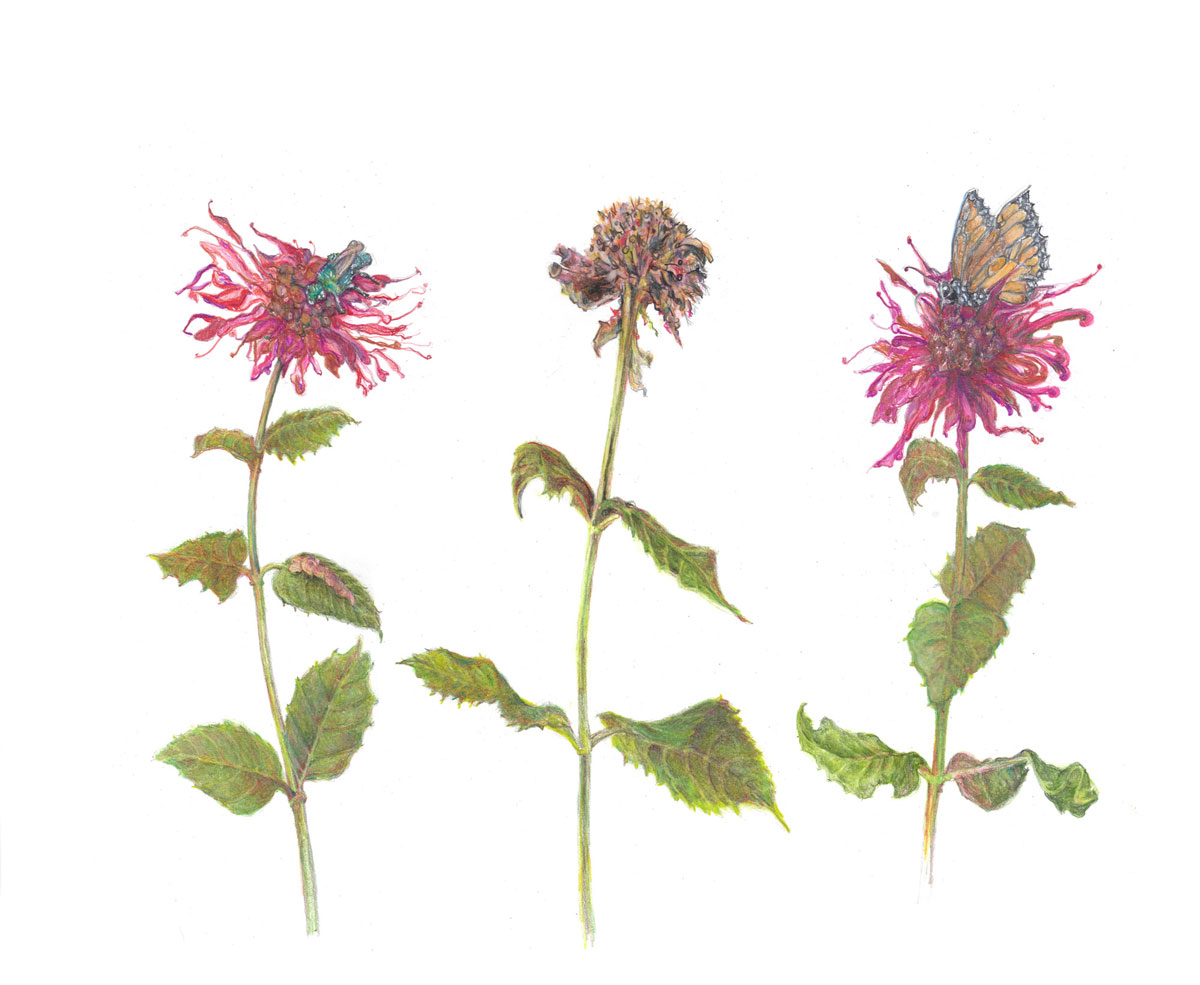
Bee-balm (Monarda didyma), illustration by Linda Tobin
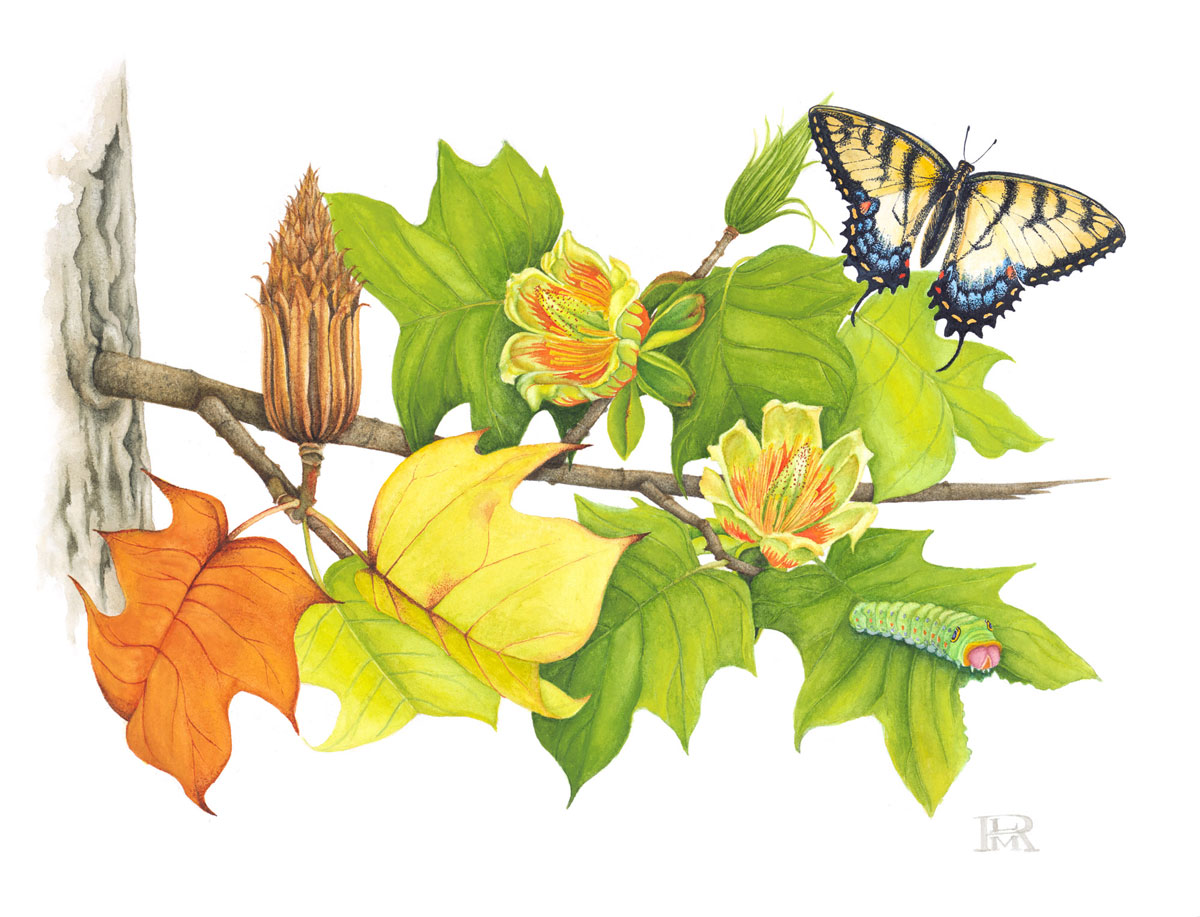
Tulip poplar (Liriodendron tulipifera), illustration by Lisa Rasmussen
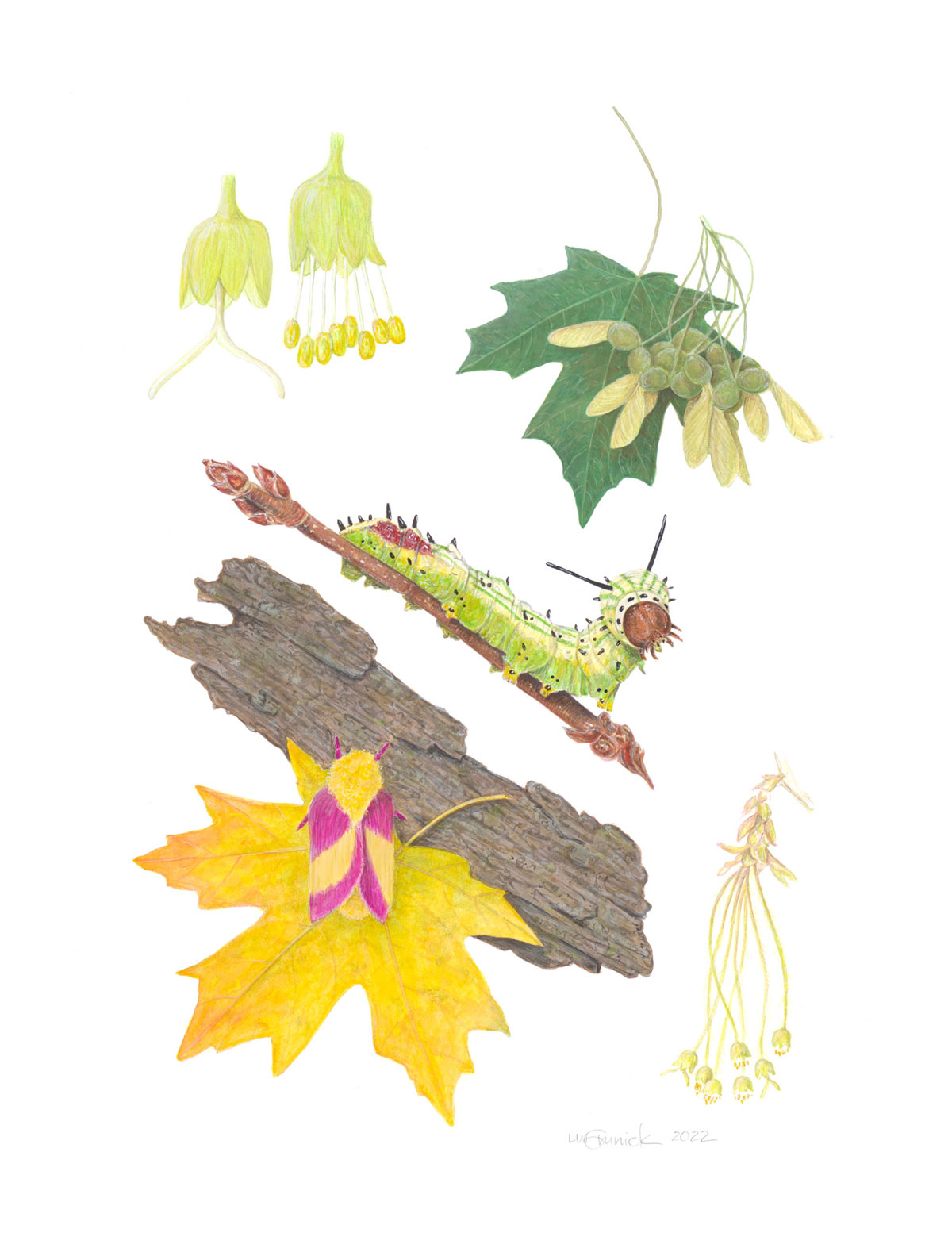
Sugar maple (Acer saccharum), illustration by Lori Grunick
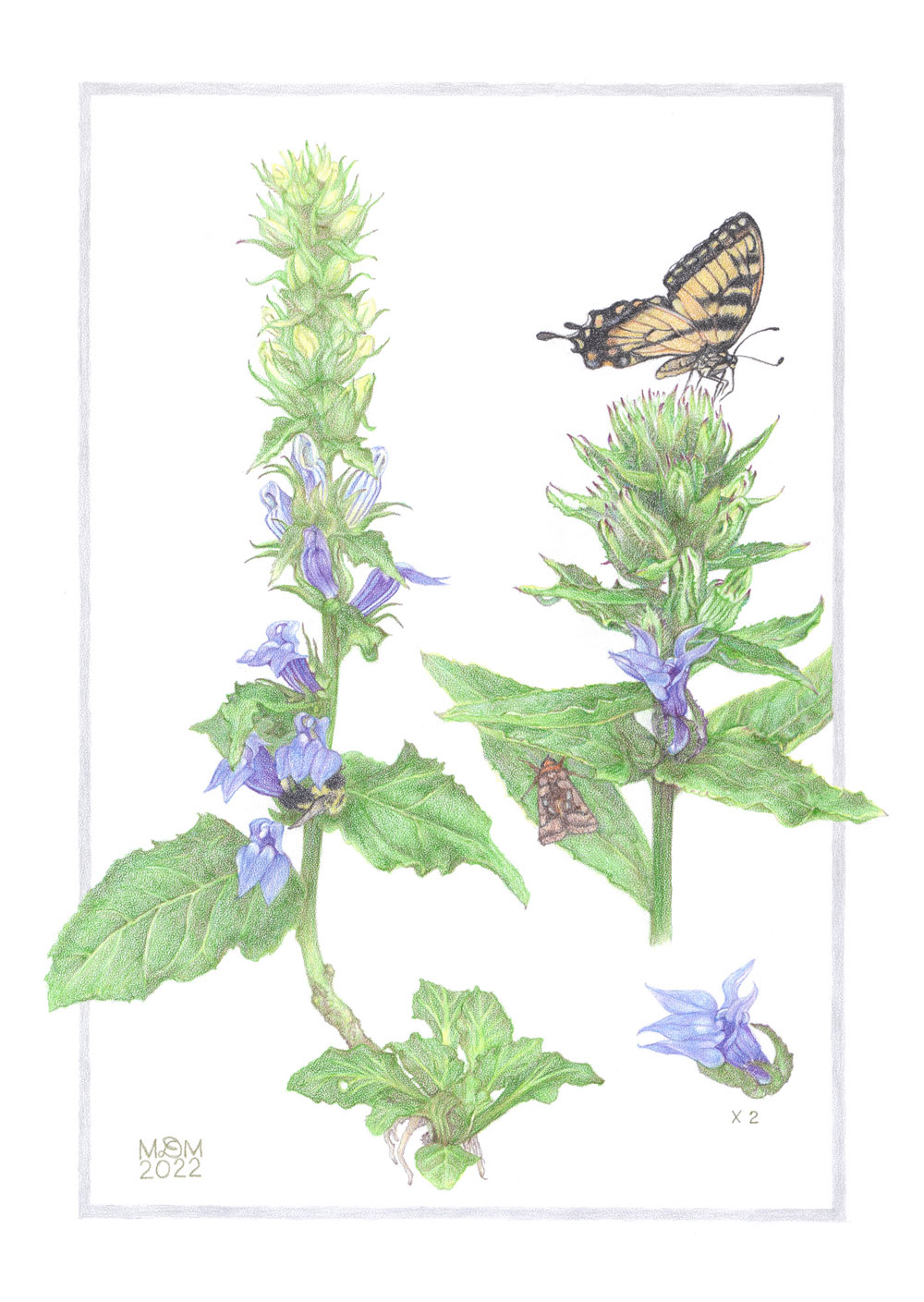
Great blue lobelia (Lobelia siphilitica), illustration by Marguerite Matz
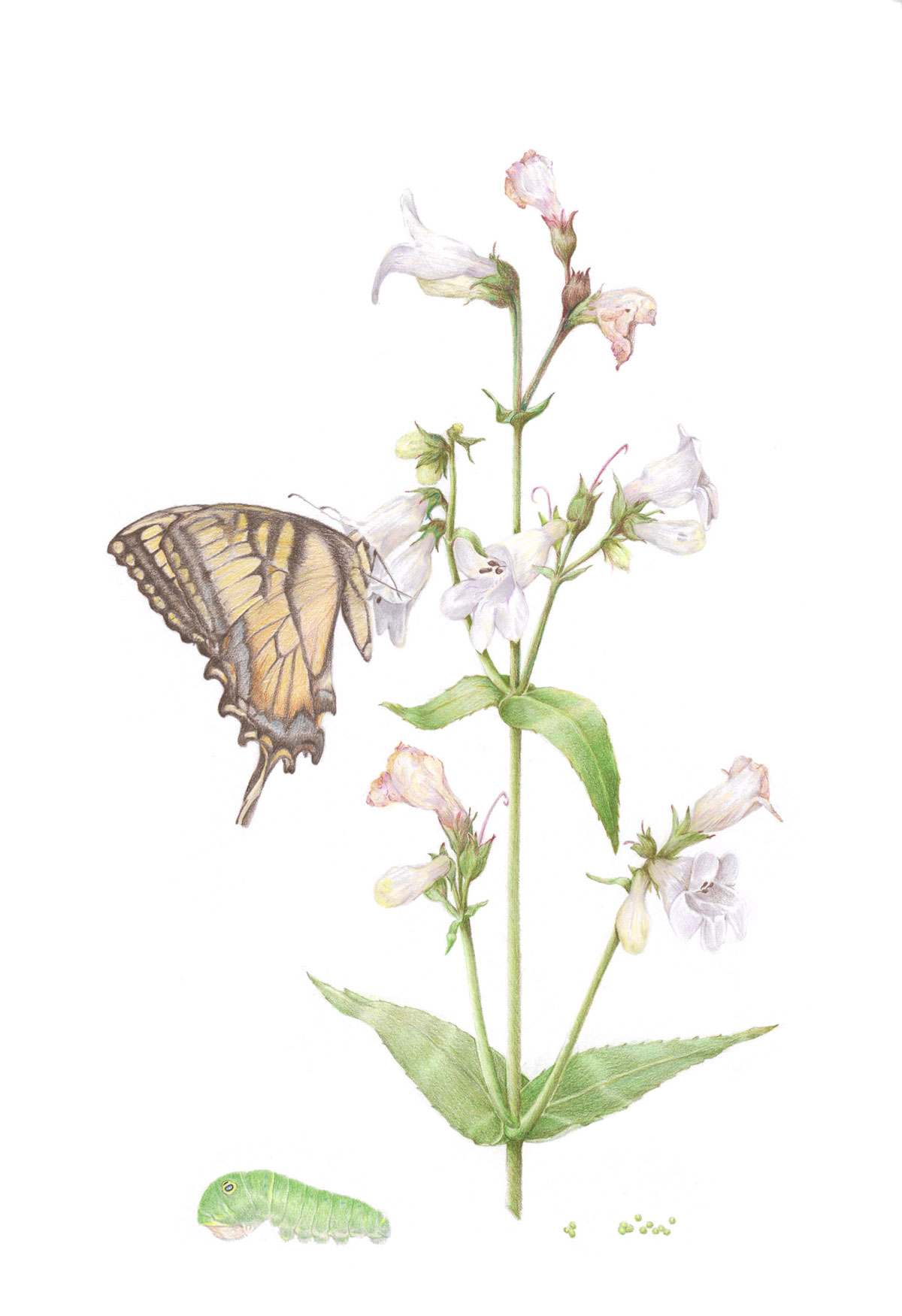
Beard-tongue (Penstemon digitalis), illustration by Maria Joseph
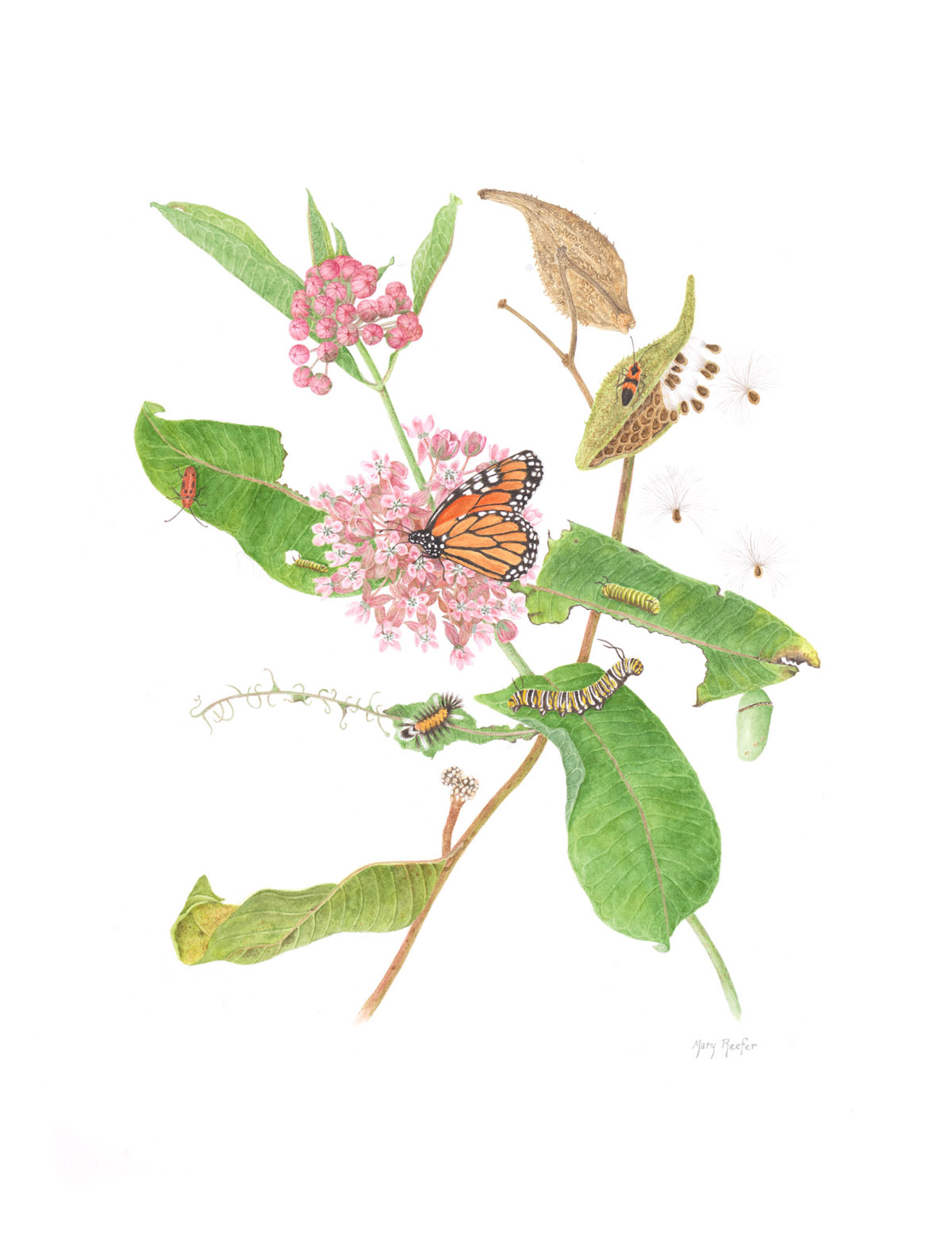
Common Milkweed (Asclepias syriaca), illustration by Mary Reefer
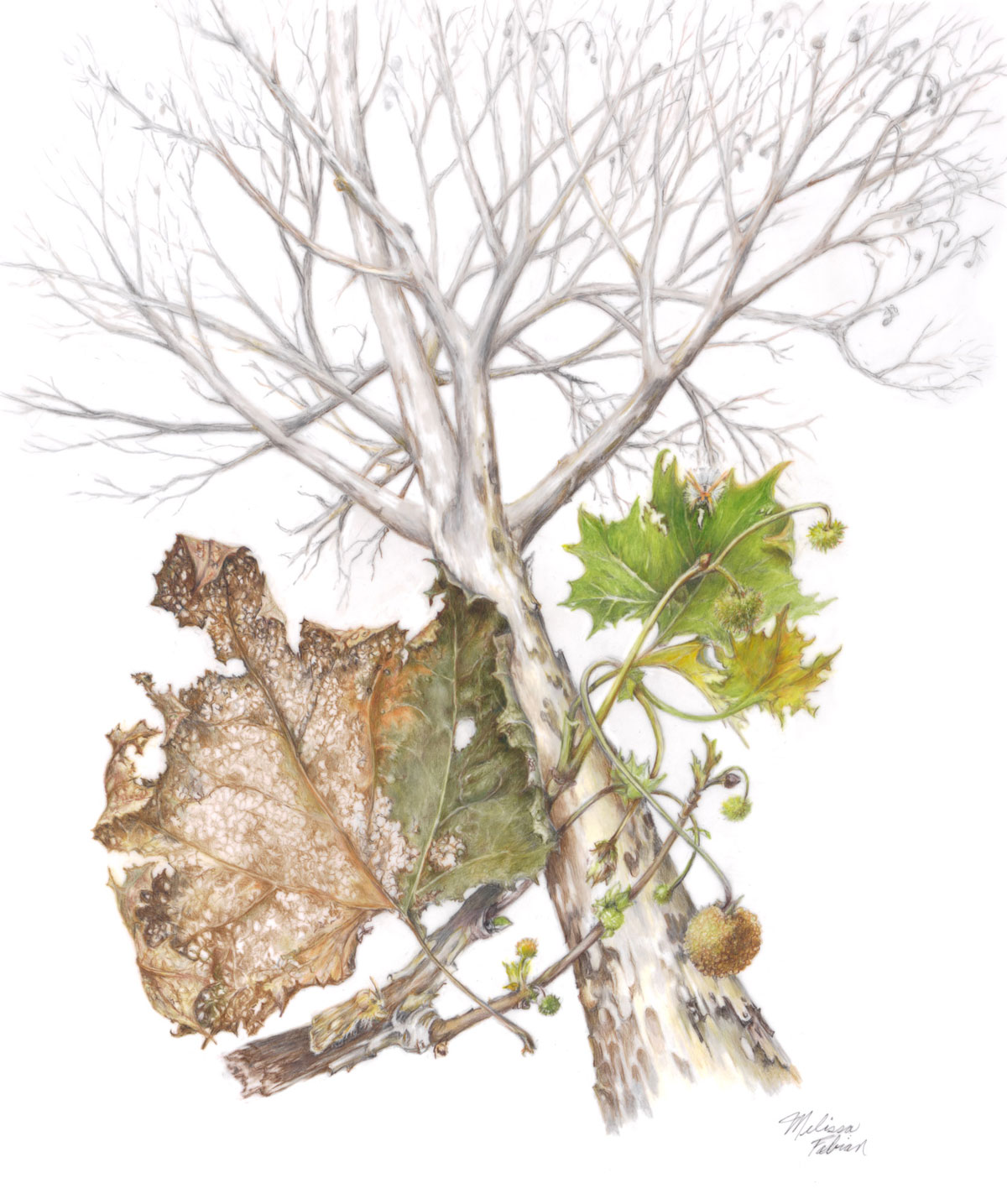
Sycamore (Platanus occidentalis), illustration by Melissa Fabian
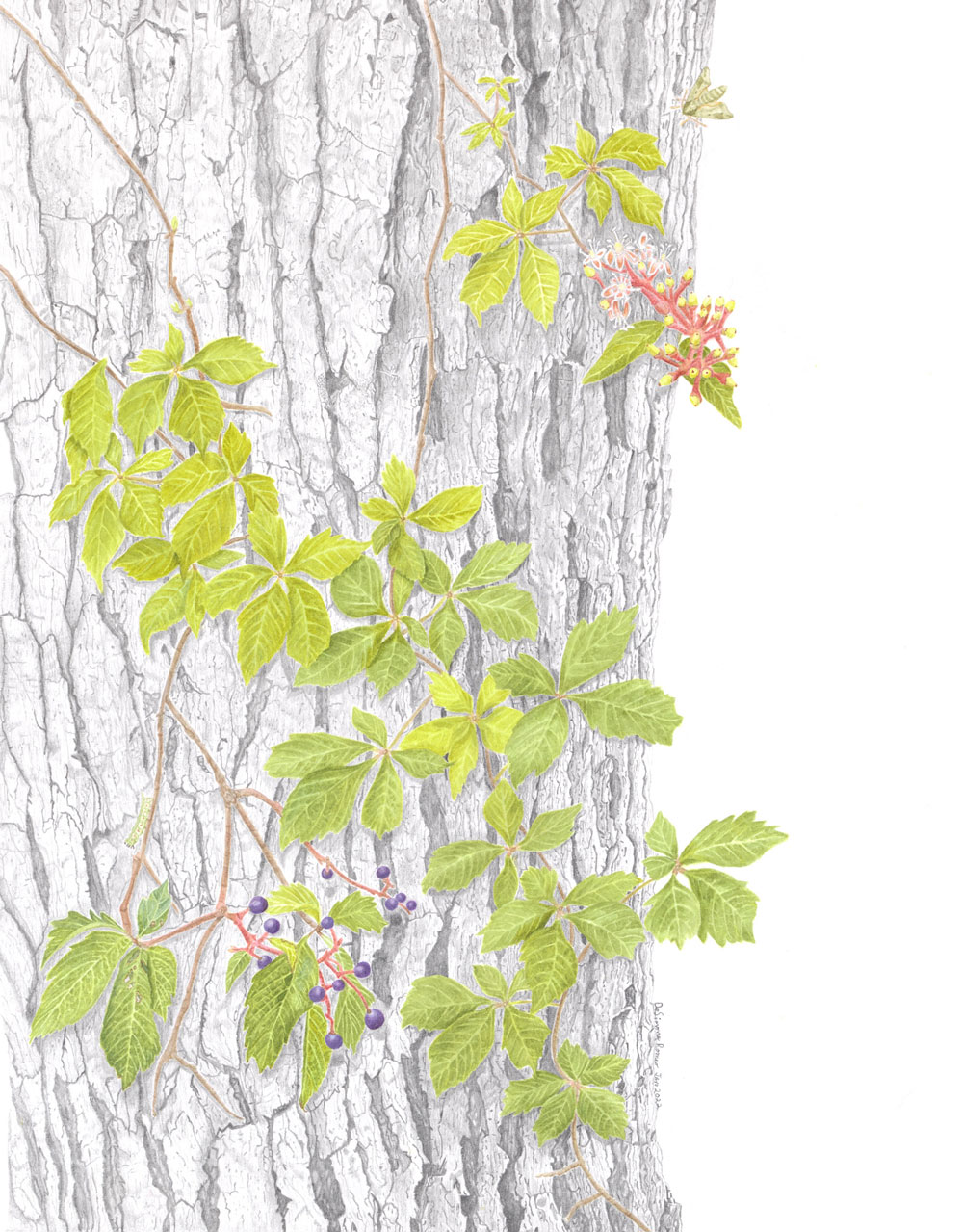
Virginia creeper vine (Parthenocissus quinquefolia), illustration by Pam DeSimone Romeo
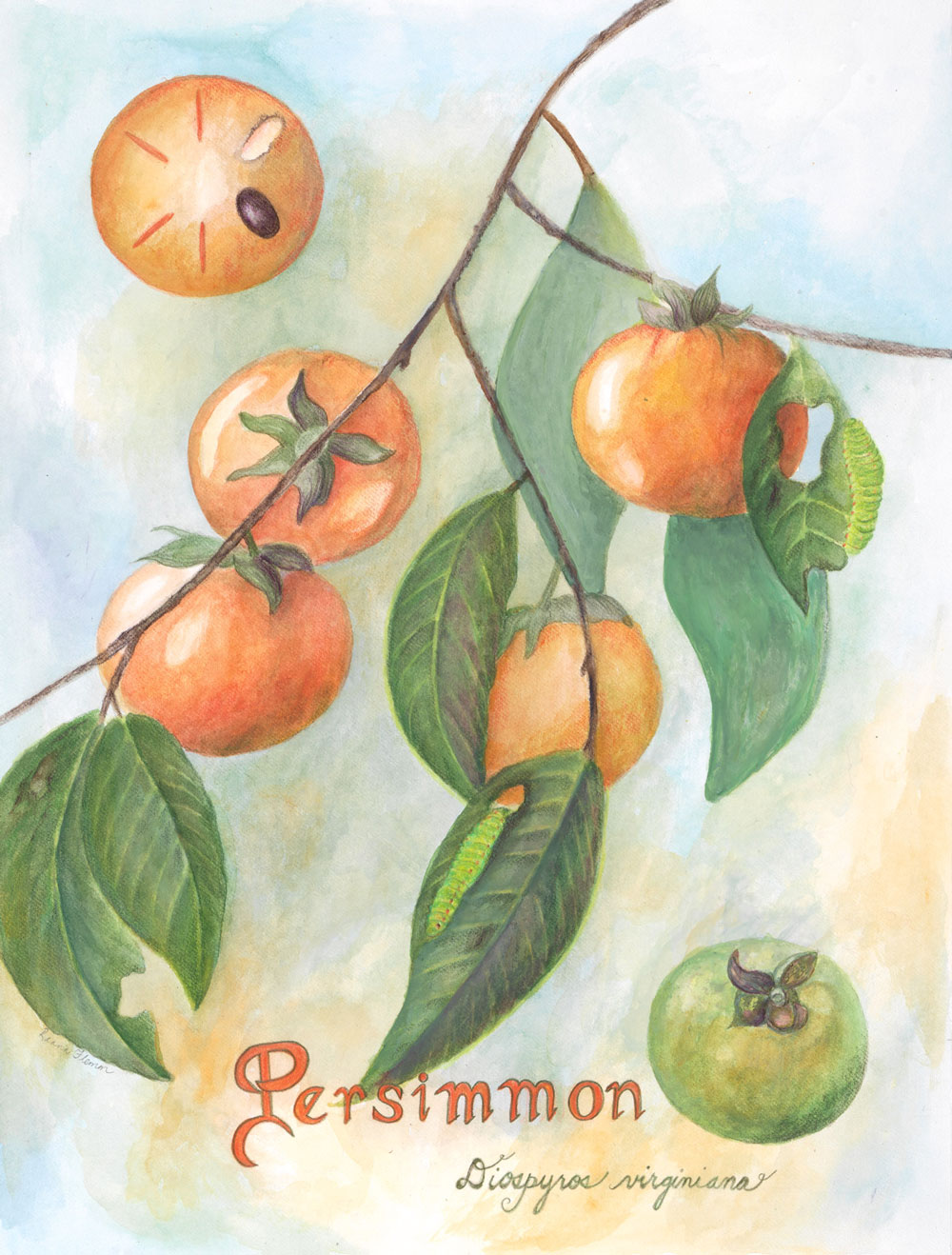
Persimmon (Diospyros virginiana), illustration by Raana Flemm
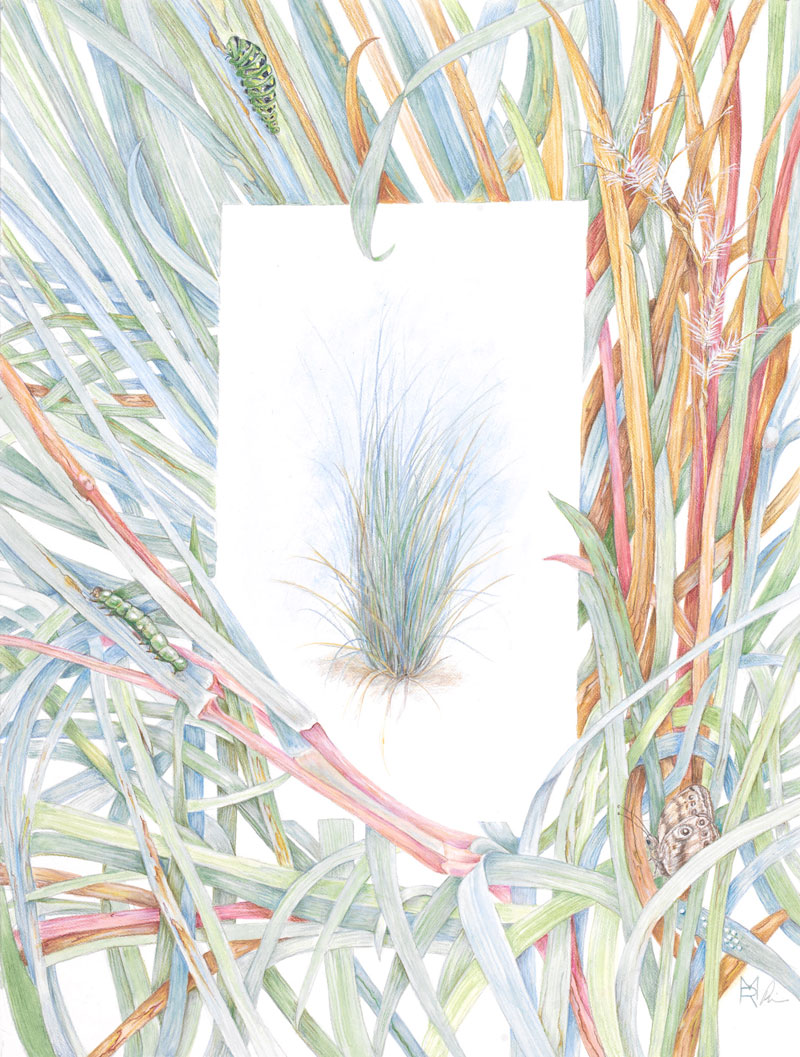
Little bluestem (Schizachyrium scoparium (A. scopanus), illustration by Robin Menard
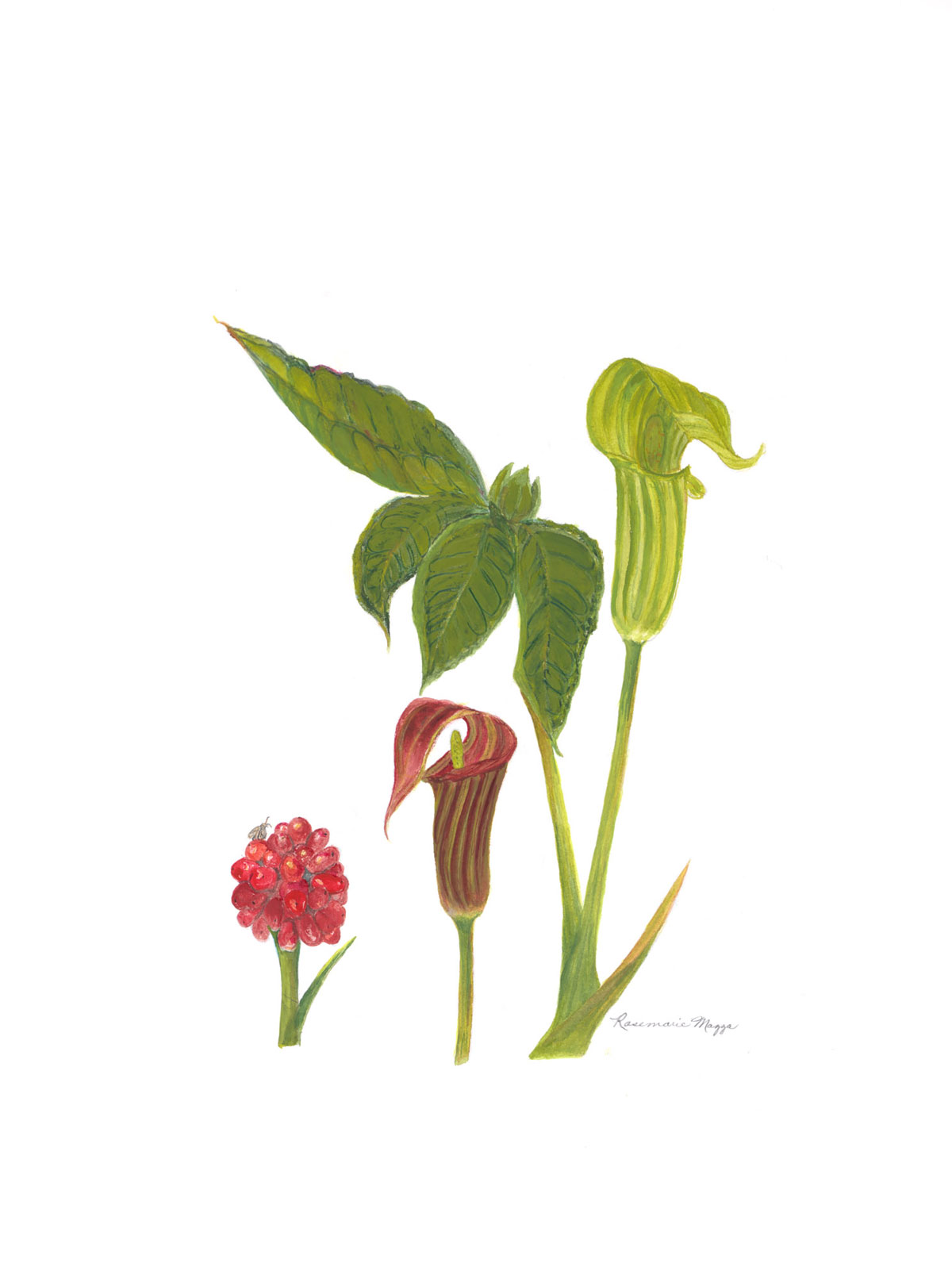
Jack-in-the-pulpit (Arisaema triphyllum), illustration by Rosemarie Mazza
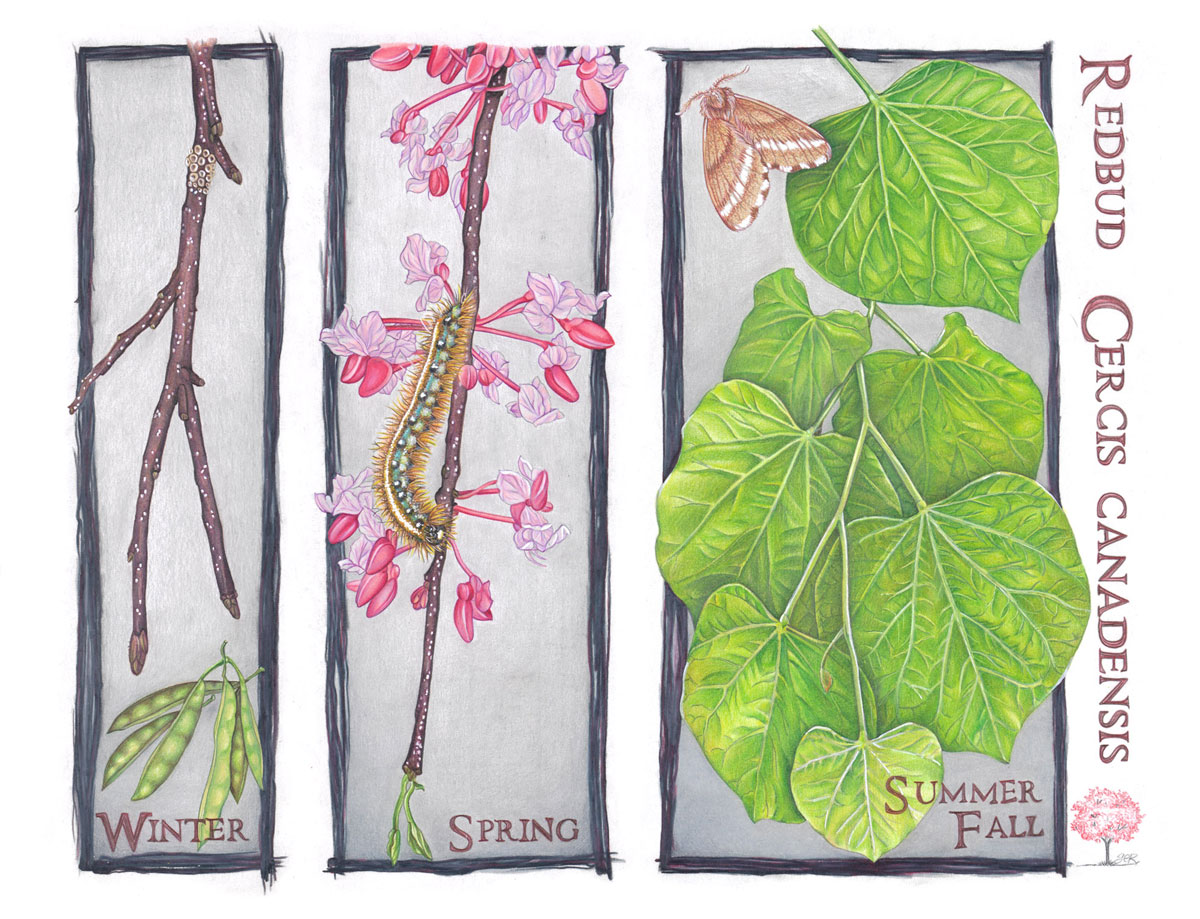
Redbud (Cercis canadensis), illustration by Sara Rivera
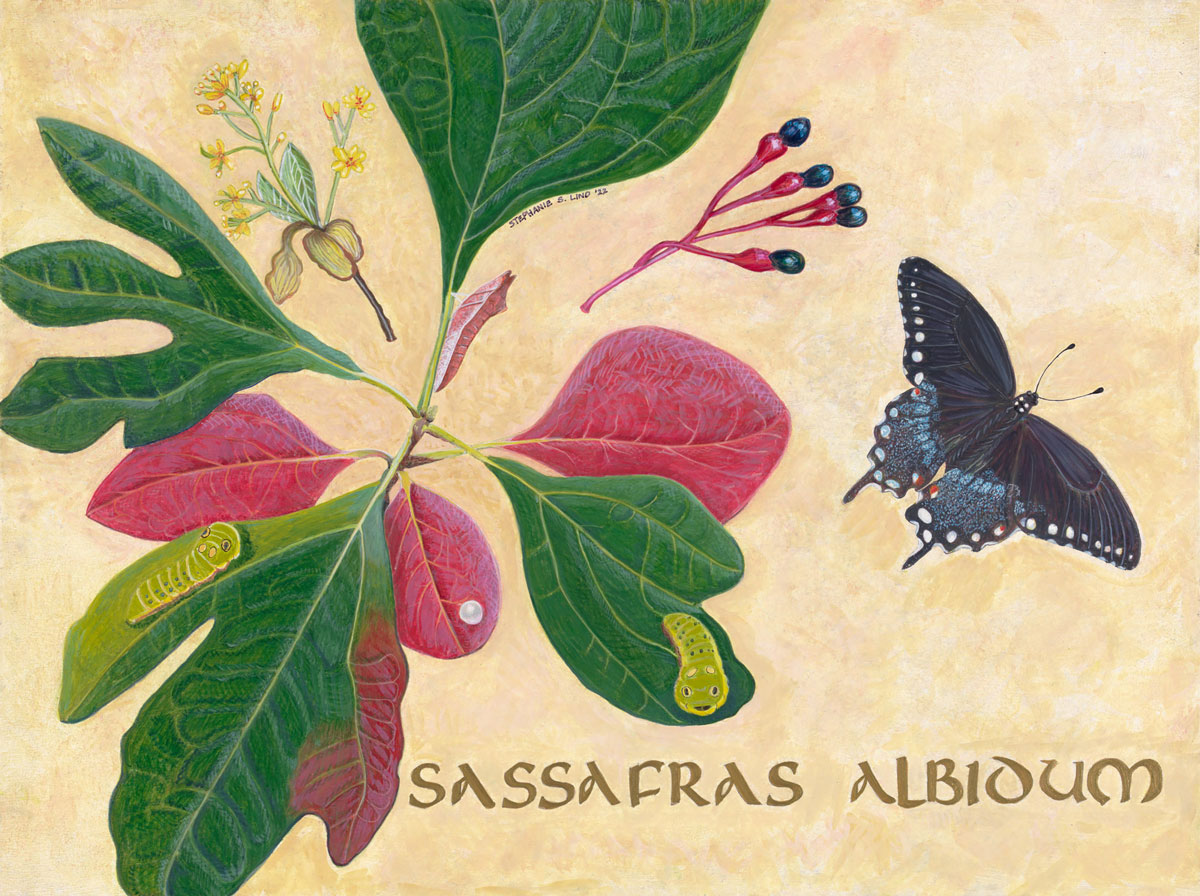
Sassafras (Sassafras albidum), illustration by Stephanie Lind
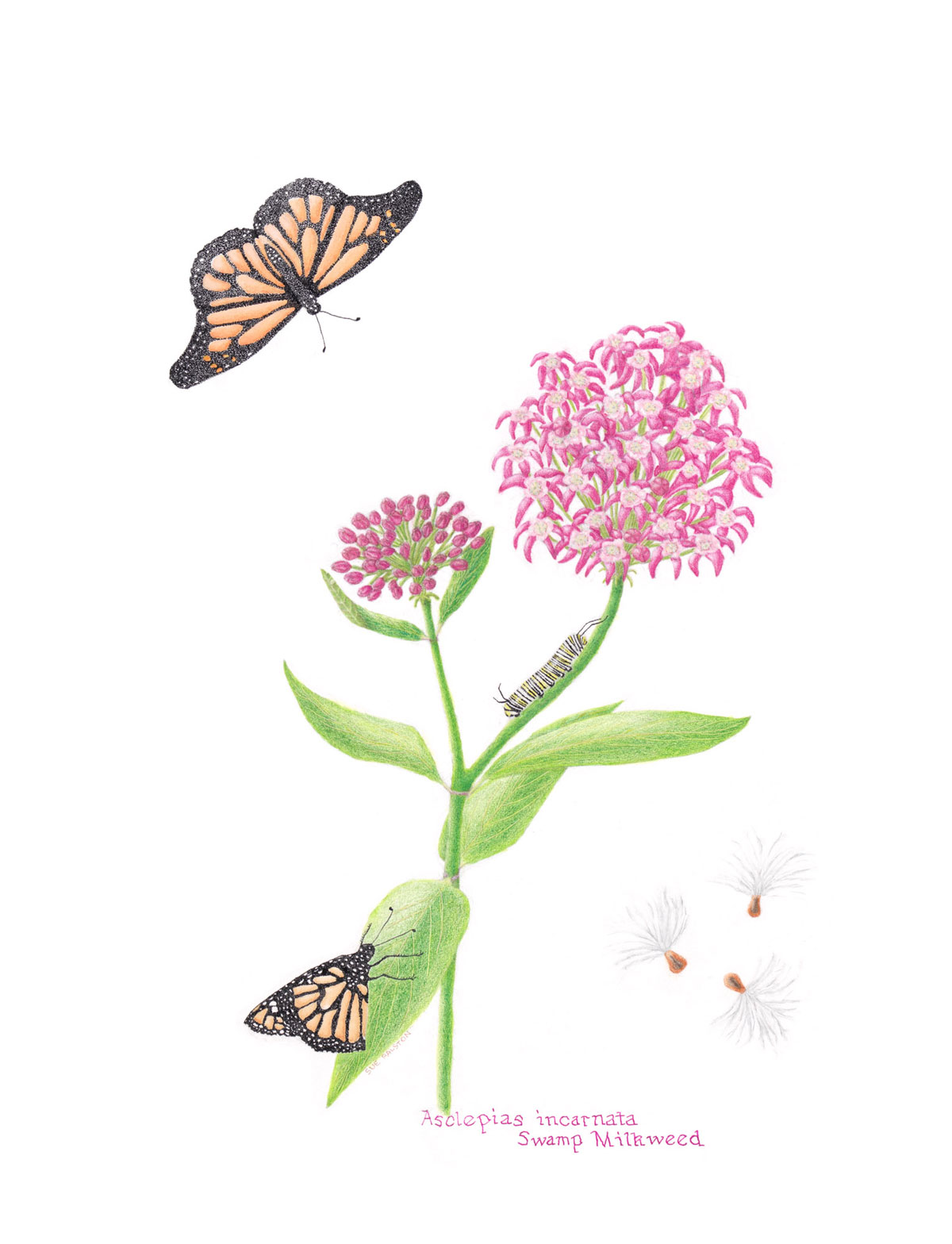
Swamp milkweed (Asclepias incarnata), illustration by Sue Ralston
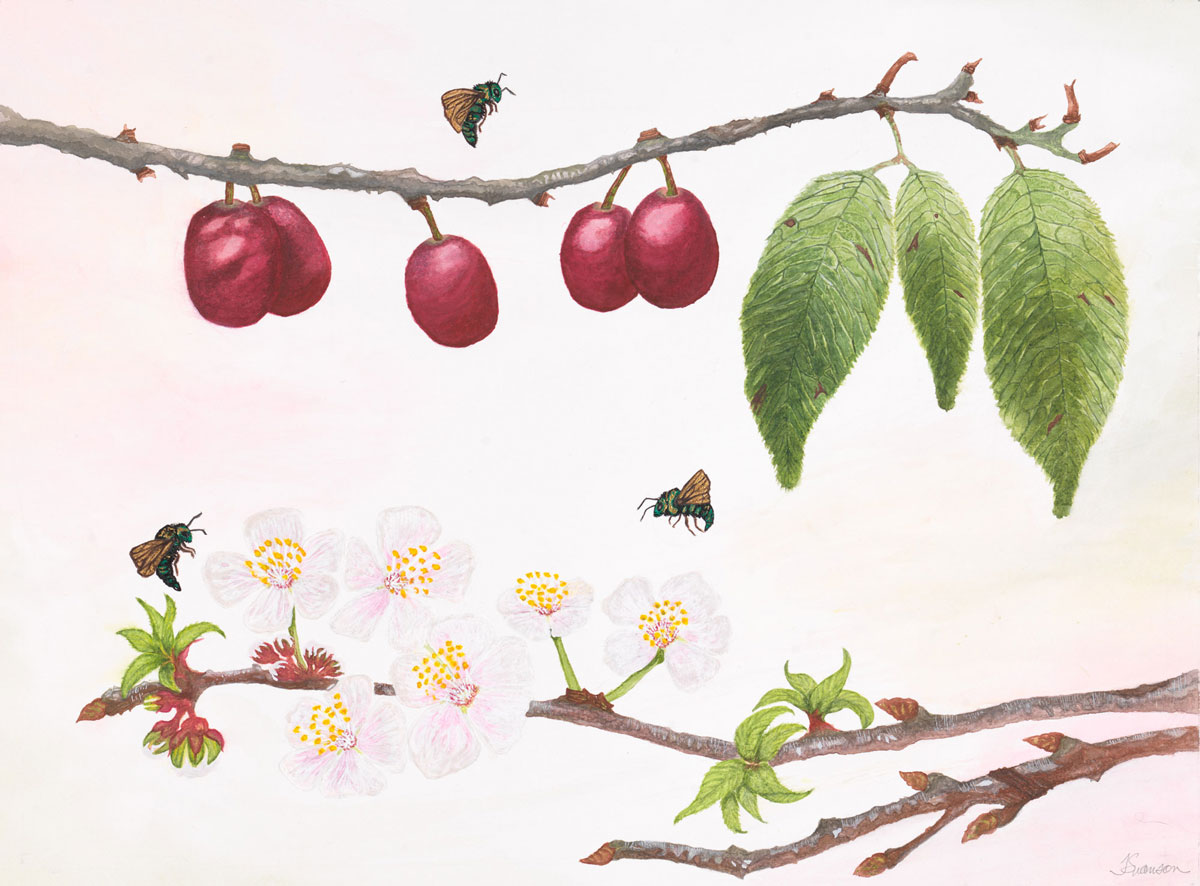
Wild plum (Prunus americana), illustration by Tamara Swanson
For more information regarding Phipps' Botanical Art and Illustration Program or other adult classes, please visit phipps.conservatory.org/Learn or call 412-437-8308.
More Events You’ll Enjoy
-
Virtual Stories with Santa
SELECT EVENINGS, NOV. 29 – DEC. 22
Join us for a special new series of stories with Santa, on select weeknights throughout the holiday season this year!



